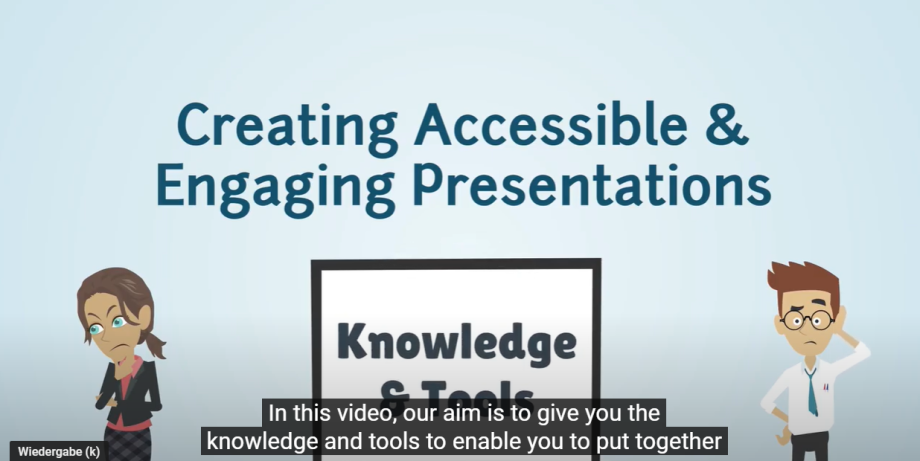Checklist for giving an inclusive presentation
When giving a presentation, make sure you don't leave anyone behind with the way you speak, interact or how you have prepared your material.
Considerations when preparing for the presentation
- If there is pre-reading material to your presentation, ensure accessible versions are prepared well in advance. Share this material and your presentation with all participants and the Sign Language interpreter preferably two weeks in advance.
- Check with the organisers, what accessibility measures are in place and if participants have raised reasonable accommodation requirements.
- Use a microphone to be clearly audible even at the back of the hall.
- Ensure there is good light on your upper body without shadows. Also, the Sign Language interpreters must be in a well-lit part of the hall.
- Create an accessible presentation (see basic recommendations below).
- Use plain language without technical words or abbreviations in the pre-reading material or in the presentation.
- Do not make your slides text-heavy or too complicated.
- When choosing images, make sure they represent the diversity of humanity and don’t reproduce stereotypes.
Considerations while presenting
- Introduce yourself. You can describe your physical self and clothes as a part of your introduction for participants with visual impairments.
- Use inclusive language. For guidance check our section on inclusive language and interaction.
- Start with the ground rules to ensure inclusion. For example
- all participants must announce their name before talking so persons with visual impairments know who is talking;
- there must not be cross-talking that can be difficult for persons with hearing impairments and Sign Language interpreters to follow;
- people should speak slowly to support the Sign Language interpreter.
- Regularly cross-check with the participants if the pace of the presentation is suitable.
- Avoid unnecessary noises and try to keep background noise to a minimum to make it easier for people to follow you.
- Remember to have regular sensory breaks, especially for persons with sensory impairments to have a few minutes break without sensory inputs.
- Do not assume everyone can read, so read out everything on your slides. Always describe everything on the slide that is not in the text like pictures and graphs. Avoid formulations like “Look at the image behind me on the slide”.
- Persons with intellectual impairments benefit if complex ideas are broken into smaller nuggets and simplified. Repetition is useful. Give adequate time for the participants to digest the information and respond.
- Give time for participants with speech impairments to express their views without interpreting or completing their sentences. If you are unsure of what they said, repeat what you understood so that the individual has a chance to respond and clarify.
- Look directly when speaking to participants with hearing impairments and do not cover your mouth or chew gum to aid lip reading.
